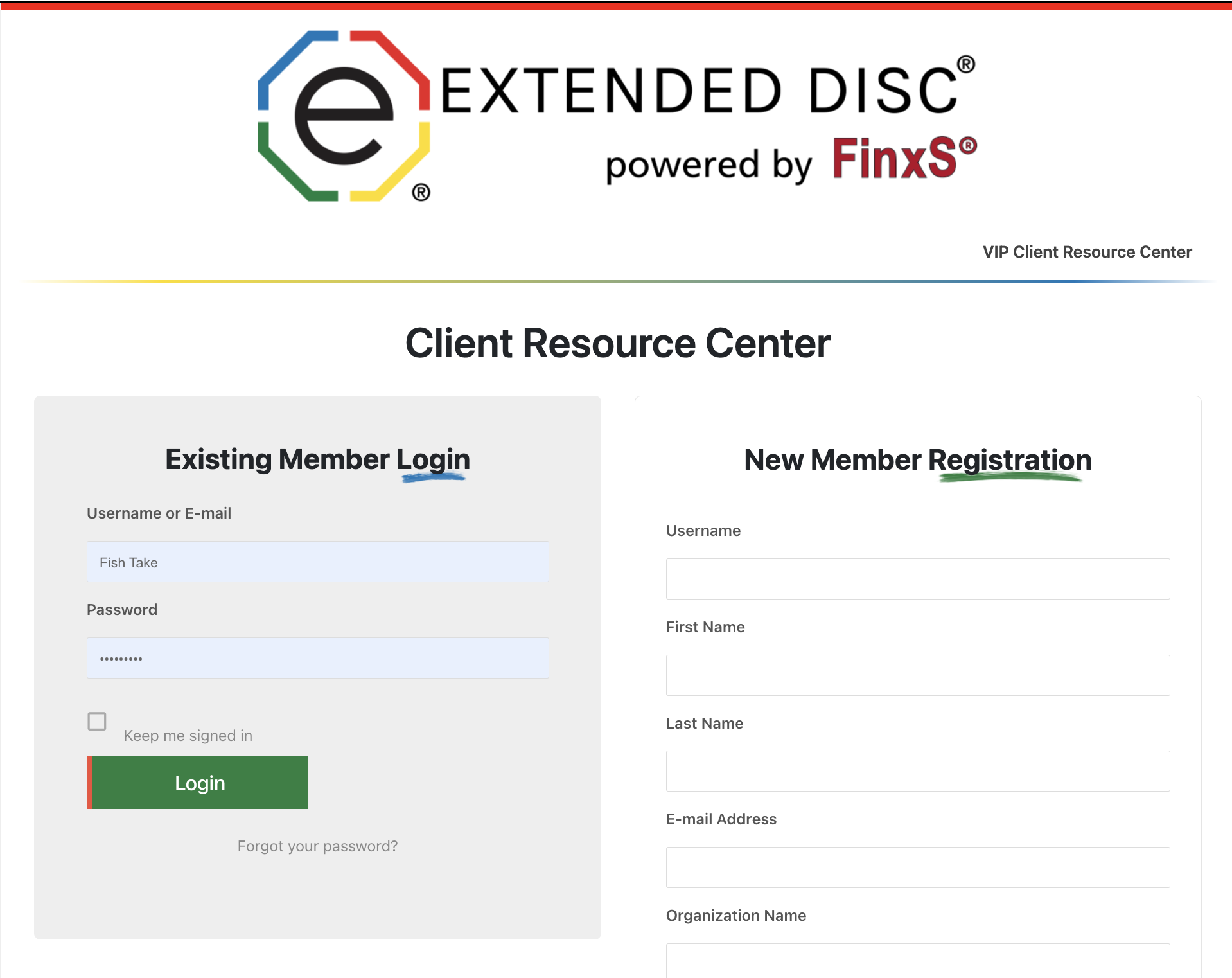Learn how to build impactful and applicable activities to support and energize your DISC sessions.
People learn by doing
Participants are more likely to apply learn when they have activities that connect a participant's real world to their classroom learning. We know people are more engaged when they're relaxed and having fun. We hope some of these DISC activities help your programs be more robust.
Plan ahead
Spending a little time planning out activities is in your best interest. First, determine your audience. What's the objective of the session? What are you trying to help your participants achieve? Now, you can figure out the logistics and materials you need.
Also, consider your time and how many activities you can fit. It never hurts to have a few Plan B activities if you have extra time or want to ramp up the session's energy.
Establishing the flow
 We've all done icebreakers because they set the tone that the session is going to be interactive. They help people relax. For example, we use an activity called Draw Your Ideal Office Space. There is no additional instruction. People are free to draw whatever comes to mind. Oftentimes, people will draw a space that aligns with their DISC style. They can revisit their drawings once you've reviewed DISC styles and their DISC results.
We've all done icebreakers because they set the tone that the session is going to be interactive. They help people relax. For example, we use an activity called Draw Your Ideal Office Space. There is no additional instruction. People are free to draw whatever comes to mind. Oftentimes, people will draw a space that aligns with their DISC style. They can revisit their drawings once you've reviewed DISC styles and their DISC results.
Another icebreaker is sharing a few personal things about each other. You're establishing group rapport for the session. You're also humanizing co-workers which helps when things get tense or frustrating.
Using the 4-Steps to Effective Interactions
.png?width=1080&height=1080&name=DISC%20Descriptors_%20Predicts%20How%20You%20Tend%20to%20Do%20Things%20(use%20anytime).png) As DISC trainers we always incorporate the 4 Steps to Effective Interactions regardless of how much time we have.
As DISC trainers we always incorporate the 4 Steps to Effective Interactions regardless of how much time we have.
- Understanding DISC styles
- Using My DISC Results to Better Understand My Style
- Understanding the Styles of Others
- Adjusting My Style
Step 1: Understand DISC-styles
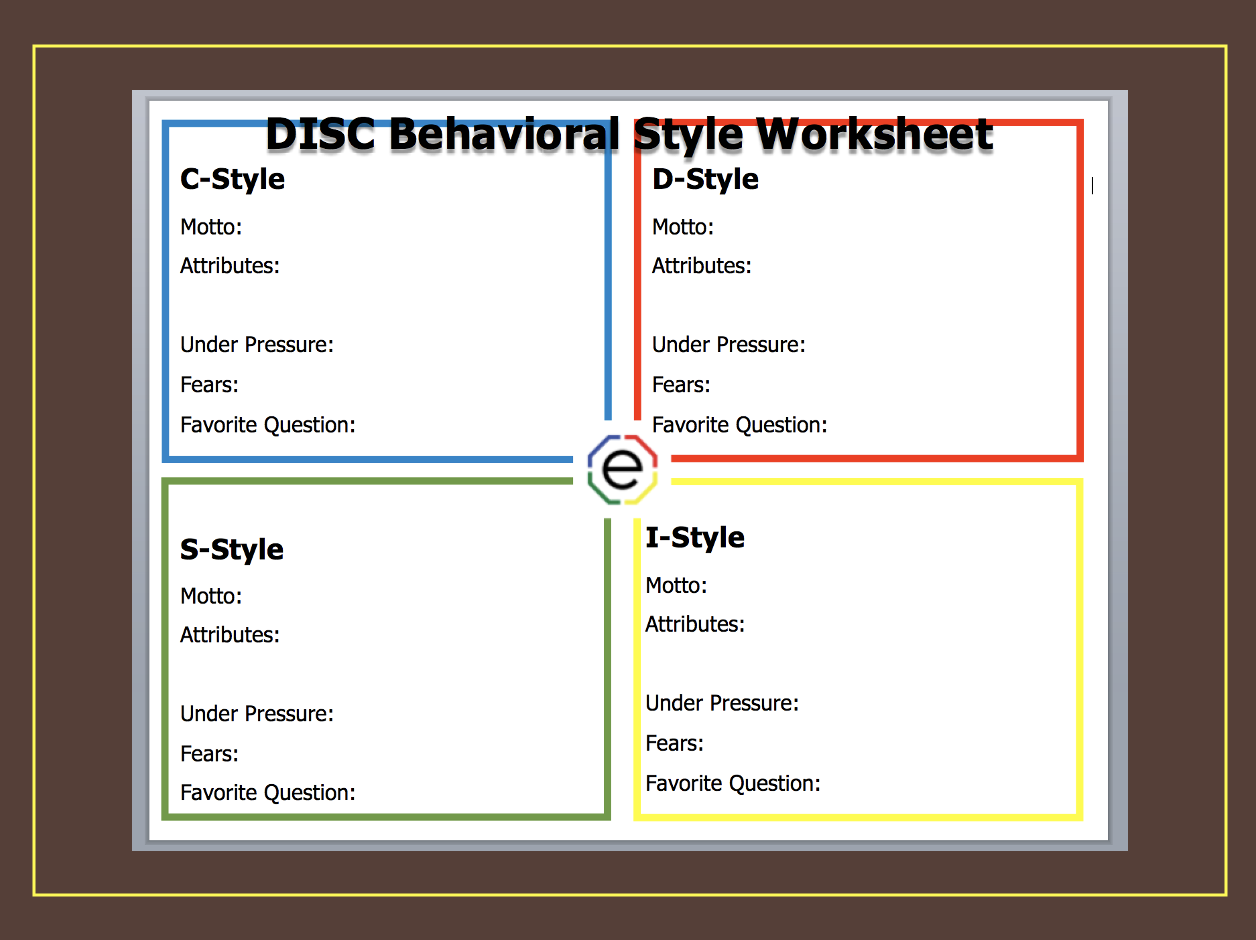 The primary activity goal for understanding DISC-styles is reinforcement. When you understand the DISC Model, it's the building blocks to the rest of the Steps. Here are examples of key elements you want to reinforce for each DISC-style:
The primary activity goal for understanding DISC-styles is reinforcement. When you understand the DISC Model, it's the building blocks to the rest of the Steps. Here are examples of key elements you want to reinforce for each DISC-style:
- Attributes
- Under pressure
- Fears
- Favorite question
- Motto
You'll talk about these key elements, but something as simple as writing it down helps with retention.
We have training videos that can be used in different ways. Each animated video is 2 minutes long and covers D, I, S, and C styles to provide an overview to each style. We often use them in classes where we have at least an hour. The four videos total 8 minutes which means you have 52 minutes to get where you need to be. Other times we assign them as pre-work which is especially helpful with tighter session timelines. You can even send them out as post-session reinforcement partnering them with Reinforcement Reports.
Consider a quick check-in by asking some questions. It's a great way to engage but lets you know how much more you need to review and reinforce. You can create slides with multiple choice questions, online polls, or use a trivia app. You can also show 60-second YouTube clips of famous personalities/characters and ask people to identify their styles. Don't worry if they don't know the famous person you're showing. The goal is to recognize the style based on the behaviors they are shown.
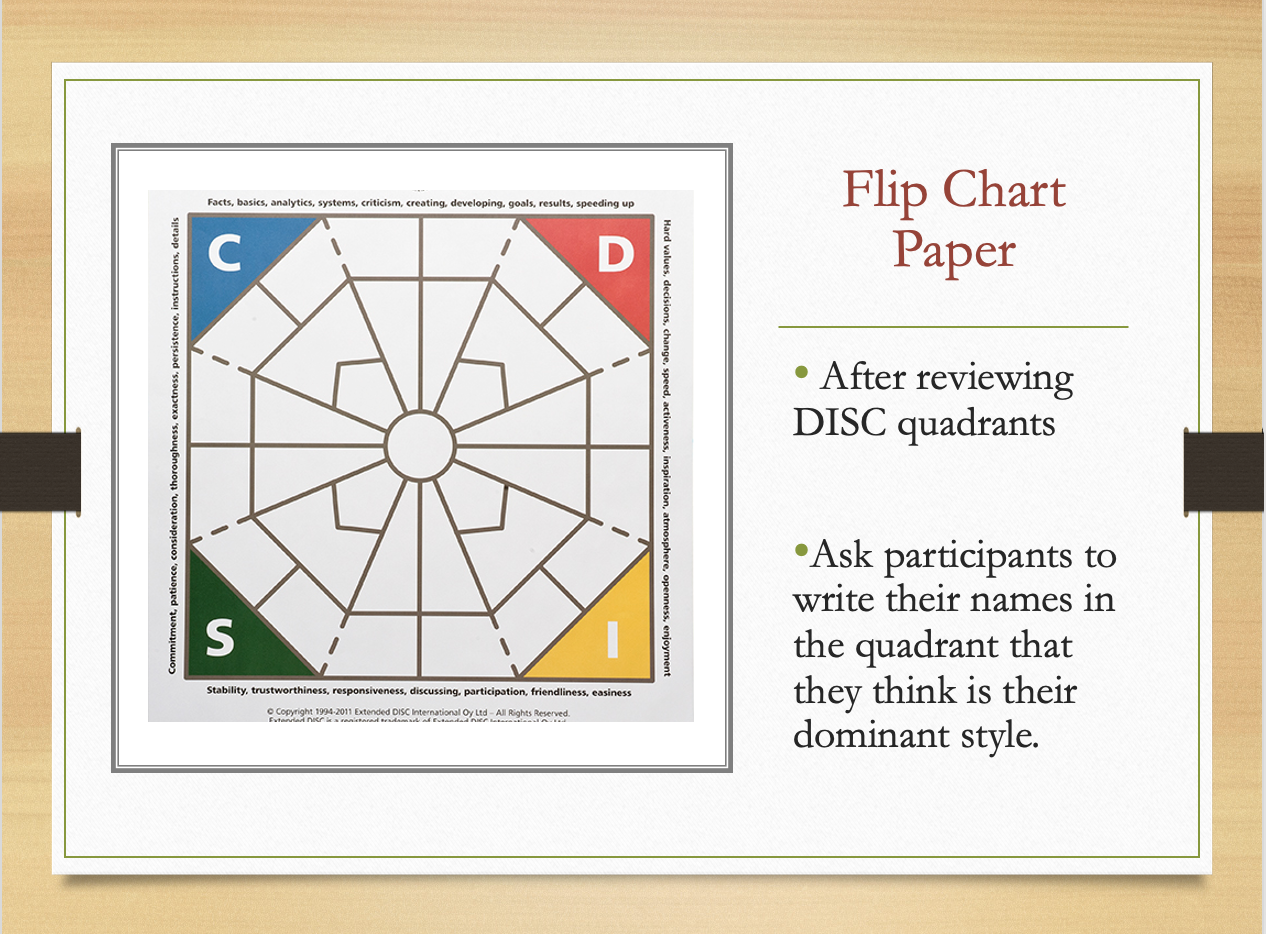 Another quick activity is self-identifying prior to receiving their DISC Report. You can ask people to write down 2 descriptors describing themselves or ask them to write their name in the DISC quadrant they think is their dominant style. After receiving their DISC Assessment, you can refer back to the activity for a reveal. Did their self-identification align with their DISC results; if not, ask themselves to consider why.
Another quick activity is self-identifying prior to receiving their DISC Report. You can ask people to write down 2 descriptors describing themselves or ask them to write their name in the DISC quadrant they think is their dominant style. After receiving their DISC Assessment, you can refer back to the activity for a reveal. Did their self-identification align with their DISC results; if not, ask themselves to consider why.
Step 2: Using my results to better understand my style
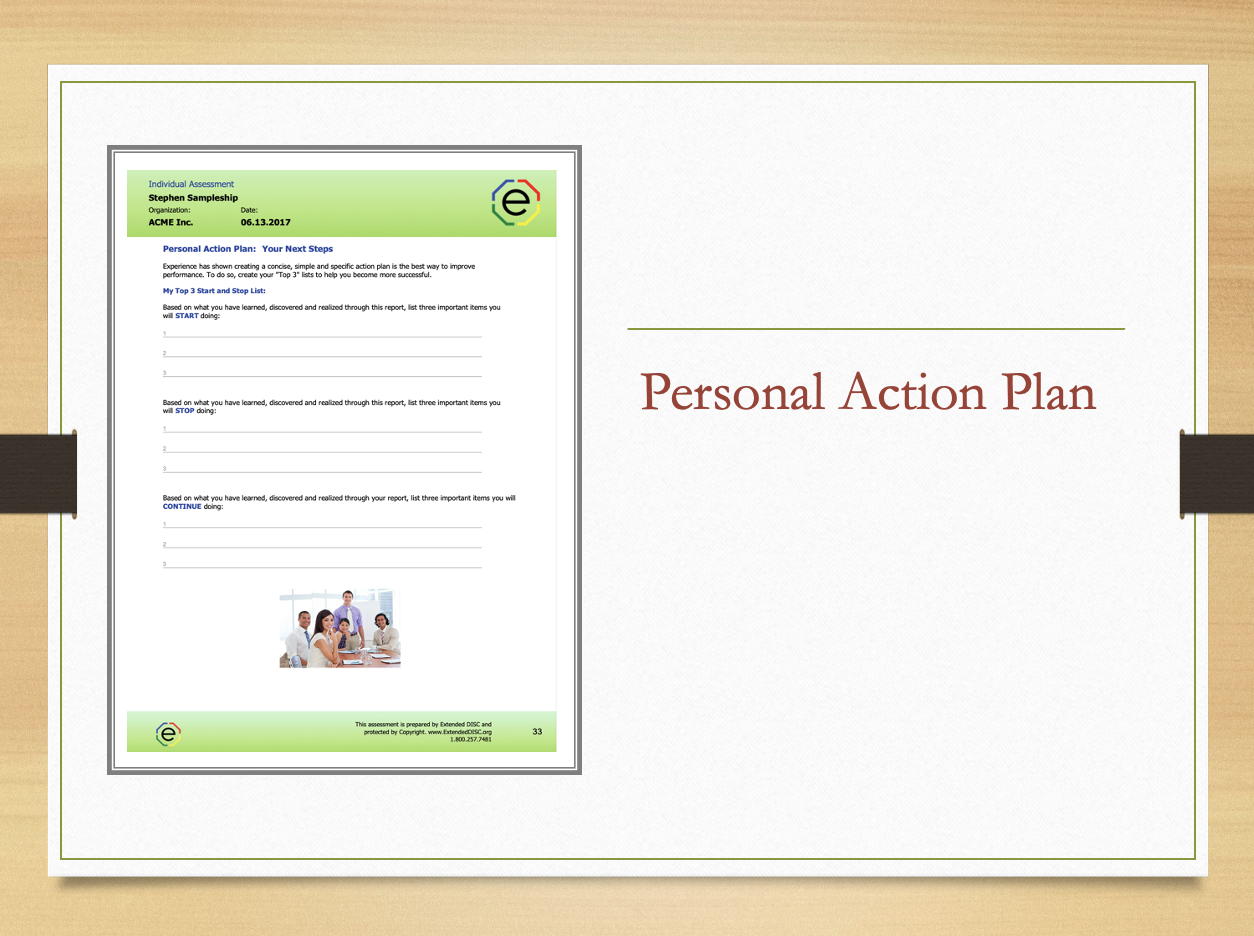 Most activities with Step 2 utilize participant reports. This is where we jump into self-awareness. Many people have a-ha moment when they connect their DISC styles to their interactions. The Extended DISC® Report is more than a report; it's a workbook. You can start by simply asking people to write the phrase 'be curious' on the front of the report. It reminds people to process the information versus just reading it.
Most activities with Step 2 utilize participant reports. This is where we jump into self-awareness. Many people have a-ha moment when they connect their DISC styles to their interactions. The Extended DISC® Report is more than a report; it's a workbook. You can start by simply asking people to write the phrase 'be curious' on the front of the report. It reminds people to process the information versus just reading it.
The goal of Step 2 activities is getting people to interact with their report results and motivating them to continue to read and use their results outside of the DISC session. One effective activity is asking people to read their 'At a Glance' section which provides a descriptive overview of the DISC style. Ask people to read their attributes and select 2 that accurately describe them. Ask people to share and recognize that their attributes can be overused by putting the word 'too' in front of the attribute. How have they overused their natural attributes?
Another variation for the 'At a Glance' section of the report is to place checkmarks next to any attribute or statement that they feel describe them. Next, place a question mark next to any attribute or statement that they are not sure of and finally, an 'x' for any attribute or statement they disagree with. It gives people an opportunity to process the information and to share with others for additional feedback. You can actually use this process for all the pages in the report.
The bottom line is to use the Extended DISC® Report as a workbook; answer the built-in questions and Personal Action Plan, and talk about it. How can they utilize the information in their real-world setting; create accountability.
Lastly, don't use all of the reports at once. It can be overwhelming. Determine the goals of the session and select the sections that are most applicable.
Step 3: Understanding styles of others
 This is where you start to identify styles of colleagues, clients, and others. It's a step towards application. We have behavioral recognition practice templates. People read a paragraph describing the behavioral style of an individual. Afterward, they discuss, usually in pairs or small groups, to determine the DISC style of the person, as well as answer additional questions about possible adjustments to make when interacting with someone with this style.
This is where you start to identify styles of colleagues, clients, and others. It's a step towards application. We have behavioral recognition practice templates. People read a paragraph describing the behavioral style of an individual. Afterward, they discuss, usually in pairs or small groups, to determine the DISC style of the person, as well as answer additional questions about possible adjustments to make when interacting with someone with this style.
Another activity is 'Choose and Defend.' Choose a topic area such as a famous person, an animal, a car, a well-known leader, etc., and ask participants to defend the style they selected to identify their choice. As the facilitator, you don't need to be familiar with the choices. Rather, you are listening to the way they defend their choices.
A quick activity is 'Guess My Style.' Select some images of famous people, objects, etc., and ask people to identify the style and defend their choice.
Step 4: Adjusting my style
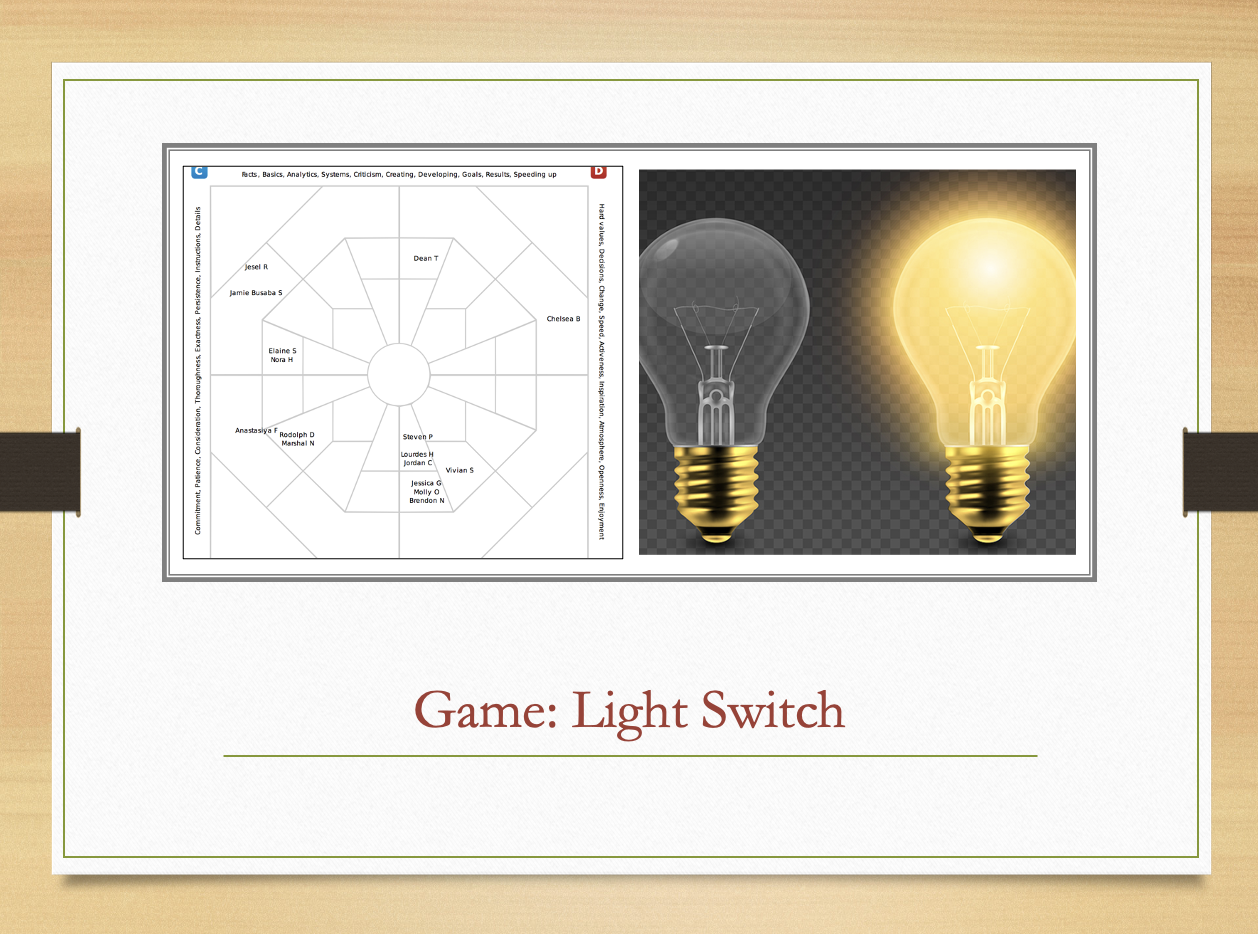
Your style works until it doesn't. DISC helps you identify the strengths of your style, but what happens when your style doesn't work? You adjust! DISC helps you understand, based on your style, how to adjust in different situations.
The 'My Communication Strategy Worksheet' helps participants create a simple behavioral action plan. You can have people do it in session or as homework. The activity takes them through the 4 Steps. The final step focuses on 'start, stop, and continue'.
- Start: What are you going to start doing with the individual based on their style?
- Stop: What are you going to stop doing that typically doesn't work with the individual's style?
- Continue: What has worked based on the individual's style and you should continue to do it more consistently?
Ask people to use their reports, specifically the section on how to and how not to communicate with each DISC style.
'How Do I Relate' is another activity to connect your real-world interactions with your classroom learning. Participants are asked to identify one person per style; considering who is easiest and most challenging to interact with. Step 4 is about creating that action plan for improving effectiveness when interacting with the person with the most challenging style for them.
The Light Switch' Activity is a great activity for larger groups. Divide up groups by their main DISC style. Ask them what lights them up and what shuts them down. Bring the 4 groups back together and share their results. Often, you'll see what lights up one style has the shutdown effect for another.
We also offer the Extended DISC® Play and Learn Card Game. There are 4 packs of cards. Each pack is a particular activity such as role-playing, identifying the style based on a descriptor, and trivia. What's great about the game is it's portable so you can bring it along and pull it out if you need a quick activity or a way to energize the group.
Your Activities and Training Resources
The activities may seem similar. That's because the concept of interaction and communication is intuitive and practical. We often need tools like DISC to raise our awareness and remind us to practice with intention and consistency. You don't have to create your activities from scratch.
The activities found here are located on our Extended DISC® - FinxS® Client Resource Center Site. As an active user of Extended DISC® Assessments, you have personal access to the resource site. The site contains, sample exercises, DISC session presentations, handouts, and more. We also post our infographics and videos on our social media sites including Pinterest, Instagram, and LinkedIn.
Contact us at CustomerService@ExtendedDISC.org for more information.

